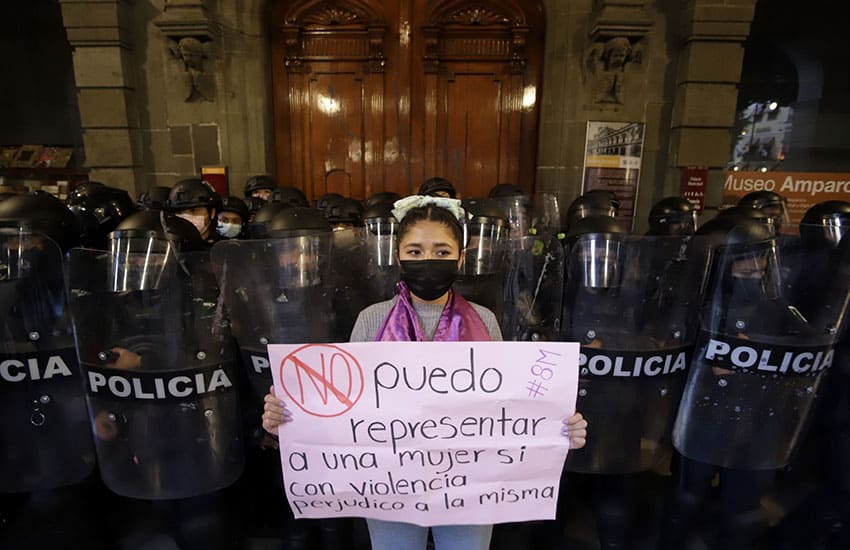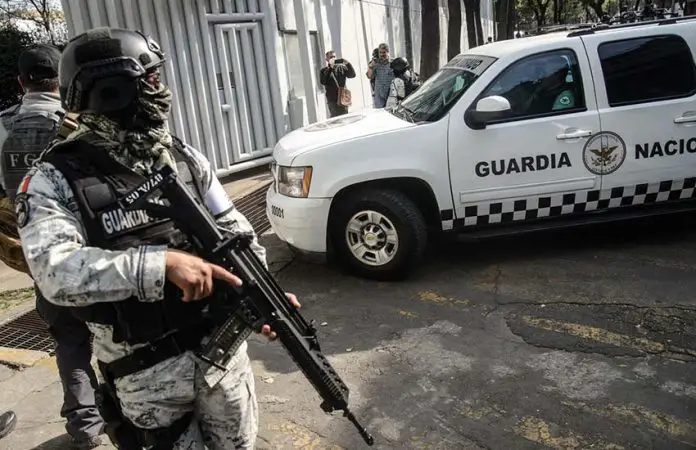The federal government spent over 700 million pesos to purchase tactical gear for the National Guard, the newspaper El Universal reported Sunday.
Citing a 2022 tender document, El Universal said that the Ministry of National Defense spent 726.53 million pesos (US $38.6 million) on 17,442 “body protection kits.”
The kits, purchased from the company Avacor, consist of a protective suit, an anti-riot helmet, a gas mask, a shield and a baton, the newspaper said.
The equipment was purchased for National Guard troops who participate in “internal order and national security operations,” according to the tender document.
The National Guard — essentially a militarized police force — was created by the current federal government to replace the Federal Police. It has been used for operations against criminals, protesters and migrants, and over 6,000 of its members are currently patrolling the Mexico City Metro.
The security force was placed under the control of the army late last year, triggering criticism that the move would further militarize the country and lead to more human rights violations.

President López Obrador, who has relied heavily on the military since taking office in late 2018, argued that the National Guard needed to be under the army’s control to prevent corruption and guarantee its professionalism.
News that the government spent over 700 million pesos on anti-riot gear was questioned by some social media users.
Julieta Macías Rábago, a former lawmaker, raised doubts about the compatibility of the purchase with López Obrador’s pledge to never use the military against “the people,” while journalist Salvador García Soto ran a poll that asked Twitter users to nominate the reason for the purchase.
As of 10 p.m. CT Monday, more than 92% of over 350 respondents said that the government made the purchase to have the capacity to suppress protest marches. Only 5% said the aim was to look after National Guard members, while just 2% said the government was concerned about looking after citizens.
Writing on the news site etcétera, journalist Rubén Cortés said that the batons purchased are the same kind that the military police use to “beat protesters.”
“And [the National Guard] had already bought 2.8 million tear gas grenades,” he added.
“The irrefutable fact is that the militarization of 200 civil institutions in Mexico is now going hand in hand with an army and National Guard arms race. They are weapons for domestic use, to use against citizens and not for national defense,” Cortés wrote.
With reports from El Universal
